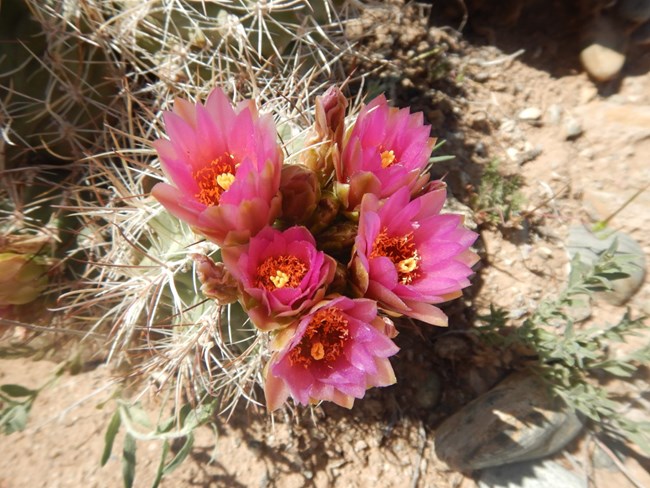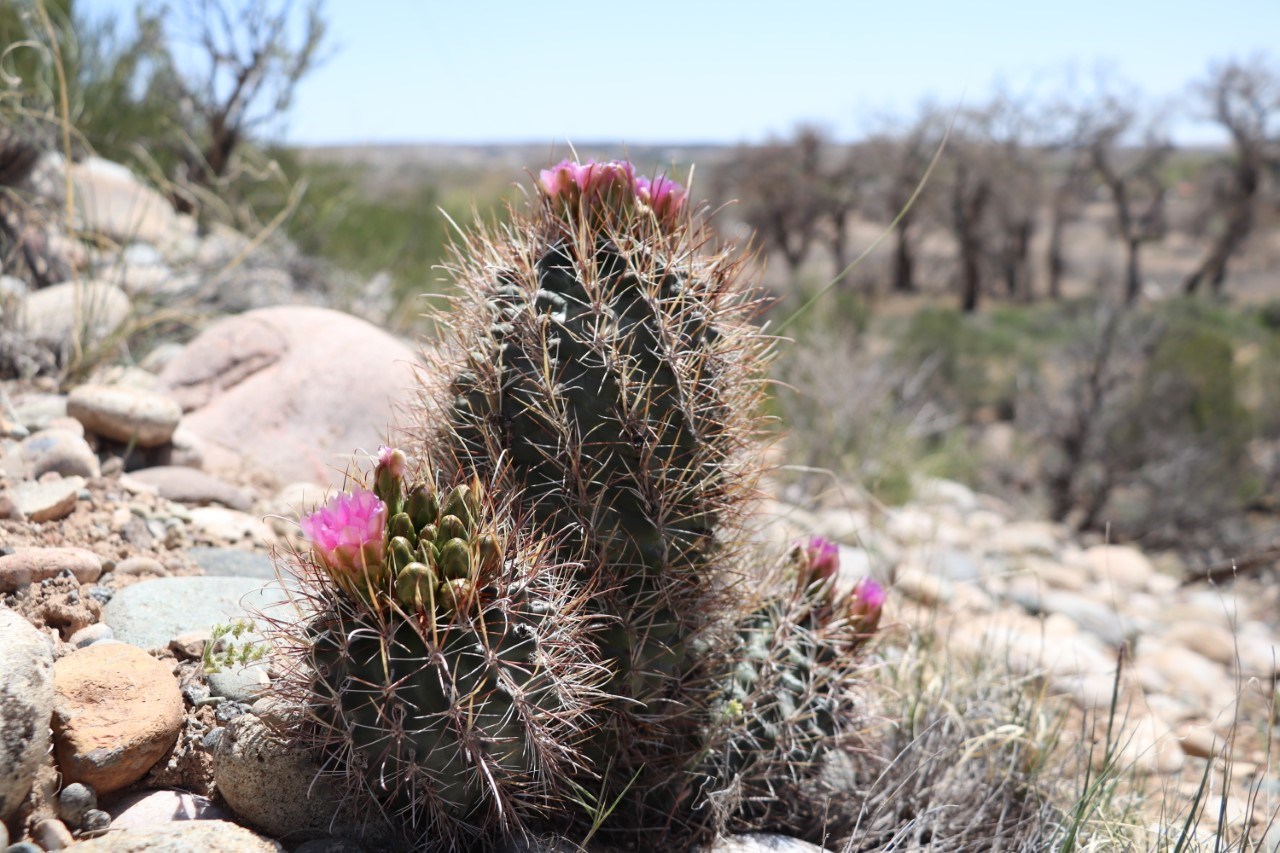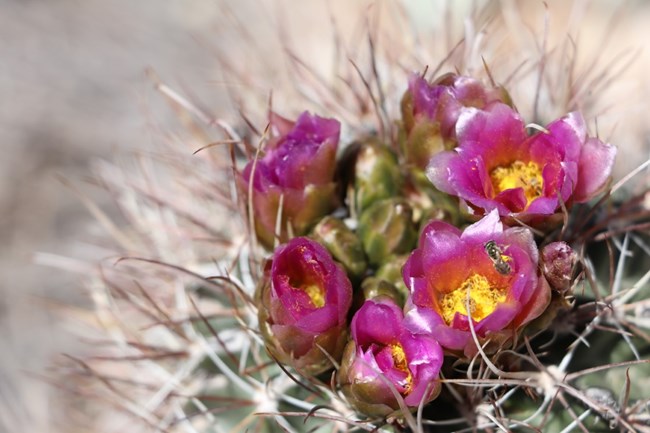
Shea Nolan/NPS Photo Did you know that Aztec Ruins National Monument not only preserves amazing ancestral Puebloan great houses, but also a rare and beautiful New Mexico endangered plant? The Clover’s fishhook cactus is only found in the San Juan Basin, and Aztec Ruins NM provides a sanctuary for this unique and sensitive species. What is a cactus? Cacti are some of the most resilient plants on Earth. A suite of adaptations allow cactus to conserve water in the dry habitats spanning the Four Corners region. Cacti are succulent plants, meaning their fleshy stems are thickened to retain and store water. Cactus spines are modified leaves. Instead of capturing energy from the sun, cactus spines defend against thirsty desert herbivores like rabbits and rodents. Swapping leaves for spines is also an adaption, as leaves tend to lose water in arid environments. Cactus roots are ideal for capturing as much water as possible. Instead of digging deep, cactus roots spread out near the surface of the soil. Primed and ready, these surface roots collect even the smallest amount of moisture that just barely soaks into the parched earth. Because cacti are adapted to living in the harshest places on the planet, they often face less competition from other plants. Consequently, cacti are amongst the most successful plants found in the drylands of the Americas, with up to 1500 described species. What is special about the Clover’s fishhook cactus? Here in the San Juan Basin, not only can it get exceedingly hot in summer, bitterly cold in winter, and desperately dry for most the year, the soil itself can be difficult for even the hardiest plants. These conditions can create badlands where most plants cannot grow. In the regions around Aztec Ruins National Monument, these badlands are primarily composed from rocks and sediments of the Nacimiento formation. As the rock formation slowly erodes, clayey sand soils develop that often contain gypsum, a mineral that restricts plant growth. The Clover’s fishhook cactus is one of the few plants that can tolerate all these conditions—extreme seasonal temperatures and badland dirt. Even for a hardy desert plant, the Clover’s fishhook cactus is extraordinary for its ability to withstand the elements. The downside of this extreme resilience is it restricts the Clover’s fishhook cactus exclusively to the San Juan Basin. Because of this, scientists refer to the Clover’s cactus as an endemic species. 
Shea Nolan/NPS Photo Habitat destruction is the primary threat to the Clover’s fishhook cactus. The Nacimiento formation, an important component of the Clover’s cactus habitat, is also a major source of natural gas. Balancing the impacts of oil and gas development is a major concern for the conservation of the Clover’s cactus. Other threats include off-road vehicle use, livestock grazing, and cactus poaching. The main natural threats to the cactus are herbivory from rodents, rabbits, and cactus longhorn beetles. Climate change is especially threatening for specialized species with small populations. Most species will migrate or disperse to new habitat in the face of unprecedented change. For highly adapted endemic species like the Clover’s cactus, there will be fewer and fewer places to escape depending on how their environment shifts. What role does Aztec Ruins National Monument play in conserving the Clover’s fishhook cactus? Aztec Ruins National Monument provides an important refuge for the Clover’s fishhook cactus. In the face of dramatic global change, preserving biodiversity—the breadth of all the worlds plants, wildlife, and diversity—is more important than ever. Protecting biodiversity is an insurance policy: the more species an environment contains, the more resilient an environment is to change. The Clover’s fishhook cactus is a species adapted to dry conditions, and a possible scenario for the future of New Mexico is an increasingly arid climate. Cactus species, like the Clover’s fishhook cactus, may play a key role in the ecosystem if the environment shifts in this direction. When we protect an endangered species, we protect the entire habitat they live in. This means that other hardy plants—companions to the Clover’s cactus—have a chance at making it through the future as well. This includes another New Mexico endangered plant, the Aztec gilia. The Aztec gilia is a unique plant with pinkish-purple flowers that, like the Clover’s cactus, is also endemic to the San Juan basin. The Aztec gilia only grows on the clayey sand soils that erode from the Nacimiento formation, and it is often found in association with the Clover’s fishhook cactus. Even if we focus conservation efforts on only one species, the other will invariably benefit. This also applies to any species found where the Clover’s cactus ranges. Providing habitat for the Earth’s most resilient plants—cactus, wildflowers, and all—makes for a more resilient future. 
Shea Nolan/NPS Photo Sclerocactus cloverae (Clover's cactus) | New Mexico Rare Plants (unm.edu) SEINet Portal Network - Sclerocactus cloverae (swbiodiversity.org) |
Last updated: June 11, 2022
